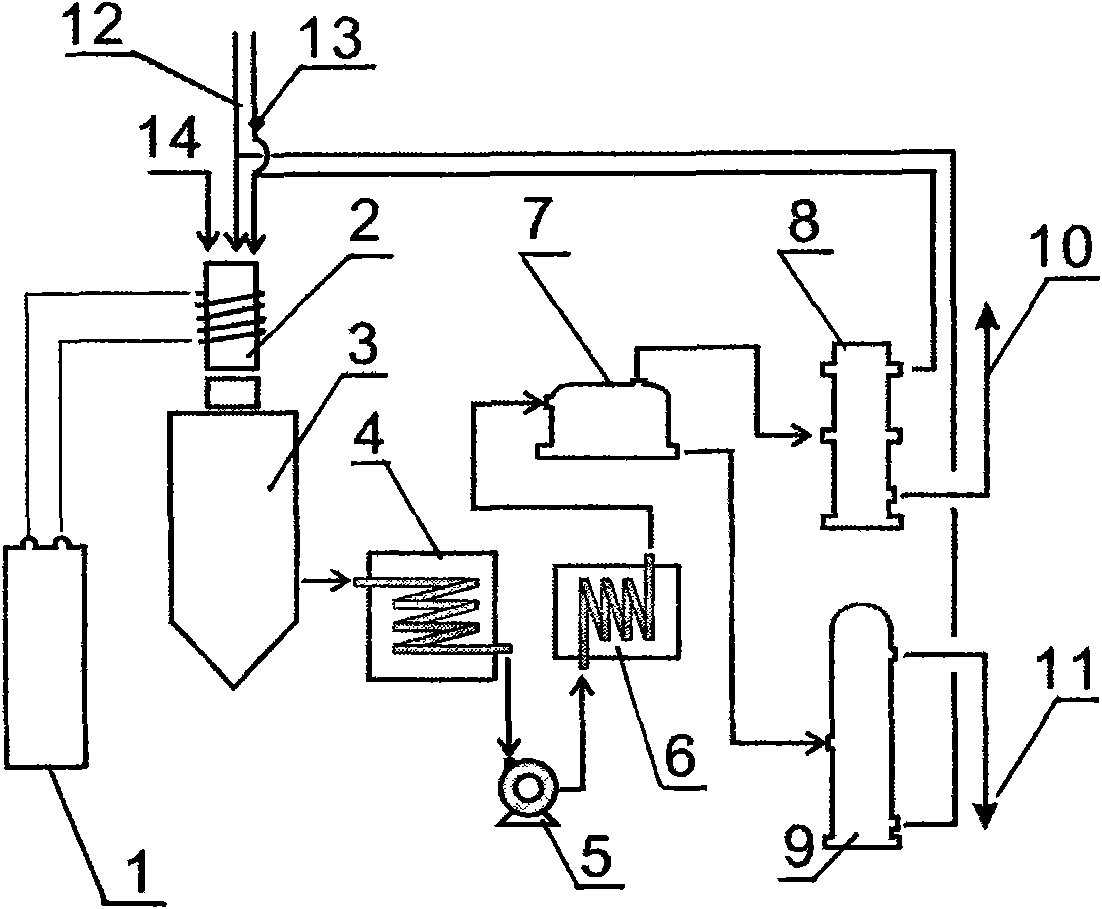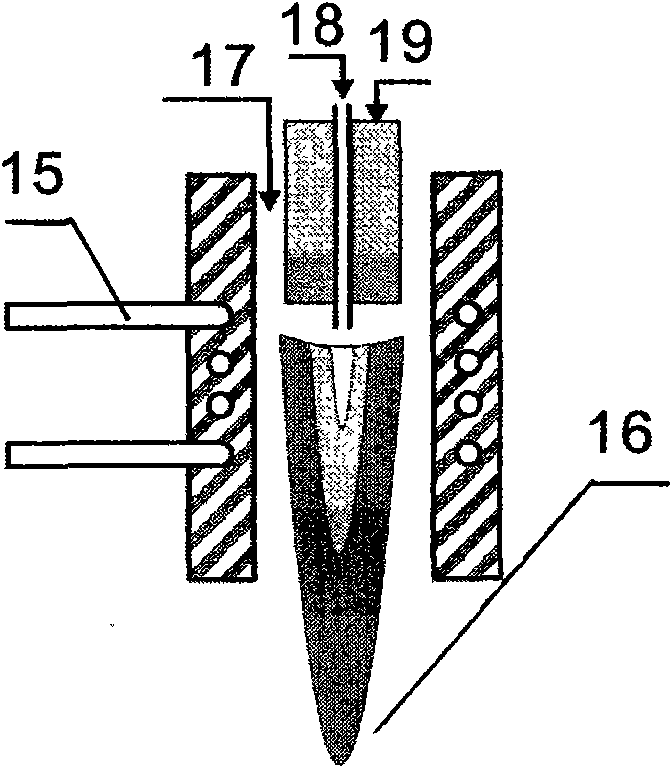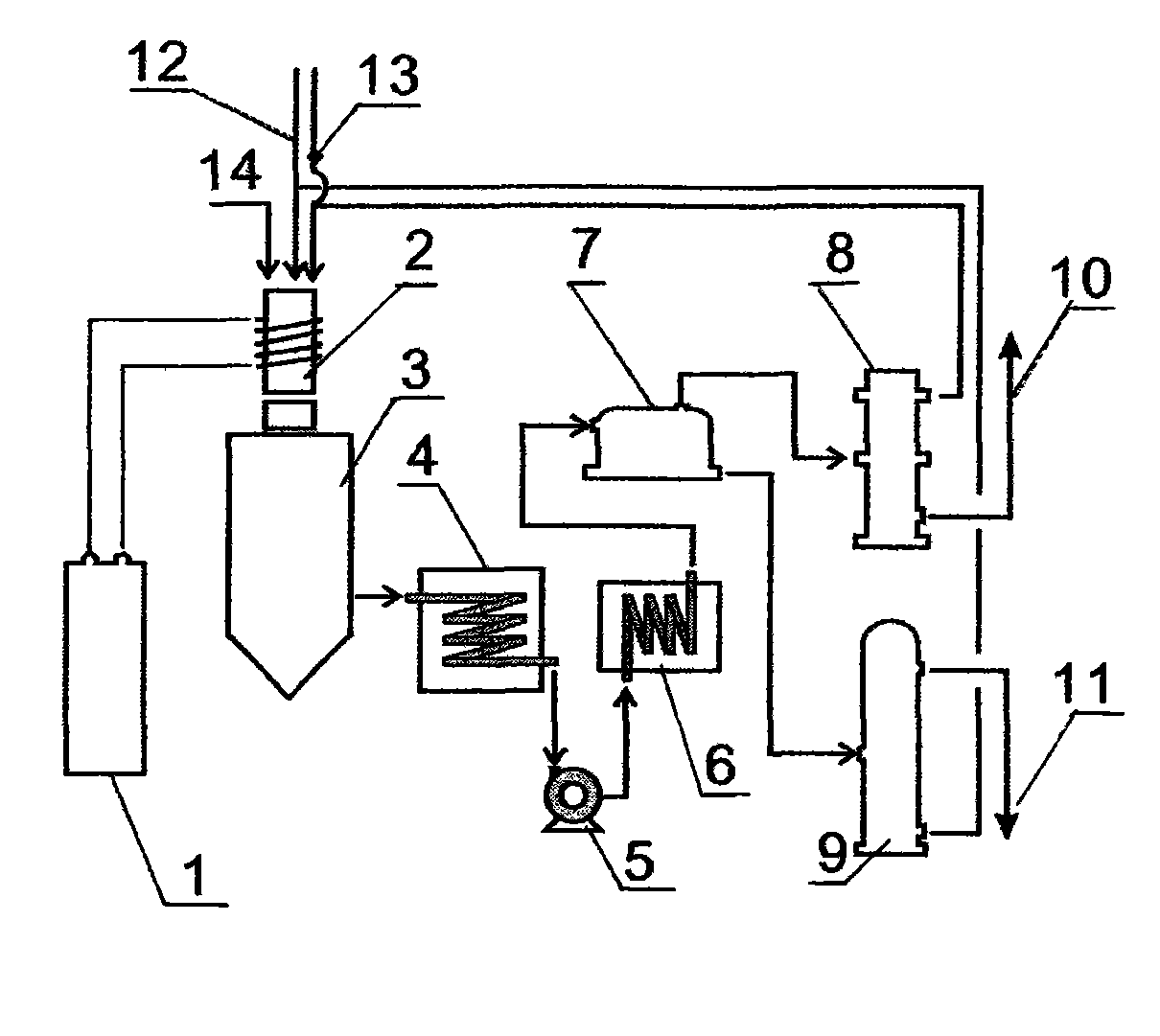Method for preparing trichlorosilane by plasma hydrogenization of silicon tetrachloride
A technology for hydrogenating silicon tetrachloride and trichlorosilane, applied in the directions of halogenated silicon compounds, halogenated silanes, etc., can solve the problems of low prospect of industrial scale development, poor industrial application, limited mixing and soaking speed of raw material gas, etc.
- Summary
- Abstract
- Description
- Claims
- Application Information
AI Technical Summary
Problems solved by technology
Method used
Image
Examples
Embodiment Construction
[0039] Further illustrate the present invention below in conjunction with accompanying drawing.
[0040] see figure 1 : the device of the present invention comprises a plasma reactor 2, the plasma reactor 2 has a power controller 1, and the downstream of the plasma reactor 2 has a buffer 3, a heat exchanger 4, a compressor 5, a cooler 6, a gas The liquid separator 7, the outlet of the gas-phase medium of the gas-liquid separator 7 is connected to the gas separation tower 8, and the outlet of the liquid-phase medium is connected to the distillation tower 9.
[0041] One of the characteristics of the present invention is that the plasma reactor 2 adopts a high-frequency induction plasma reactor with a frequency of 5 MHz. It has the following two advantages:
[0042] 1. The electric field generated by the reactor is an alternating electric field, and there is no fixed electrode, so there is no electrode metal corrosion and no contamination of raw materials.
[0043] 2. Compare...
PUM
 Login to View More
Login to View More Abstract
Description
Claims
Application Information
 Login to View More
Login to View More - R&D
- Intellectual Property
- Life Sciences
- Materials
- Tech Scout
- Unparalleled Data Quality
- Higher Quality Content
- 60% Fewer Hallucinations
Browse by: Latest US Patents, China's latest patents, Technical Efficacy Thesaurus, Application Domain, Technology Topic, Popular Technical Reports.
© 2025 PatSnap. All rights reserved.Legal|Privacy policy|Modern Slavery Act Transparency Statement|Sitemap|About US| Contact US: help@patsnap.com



